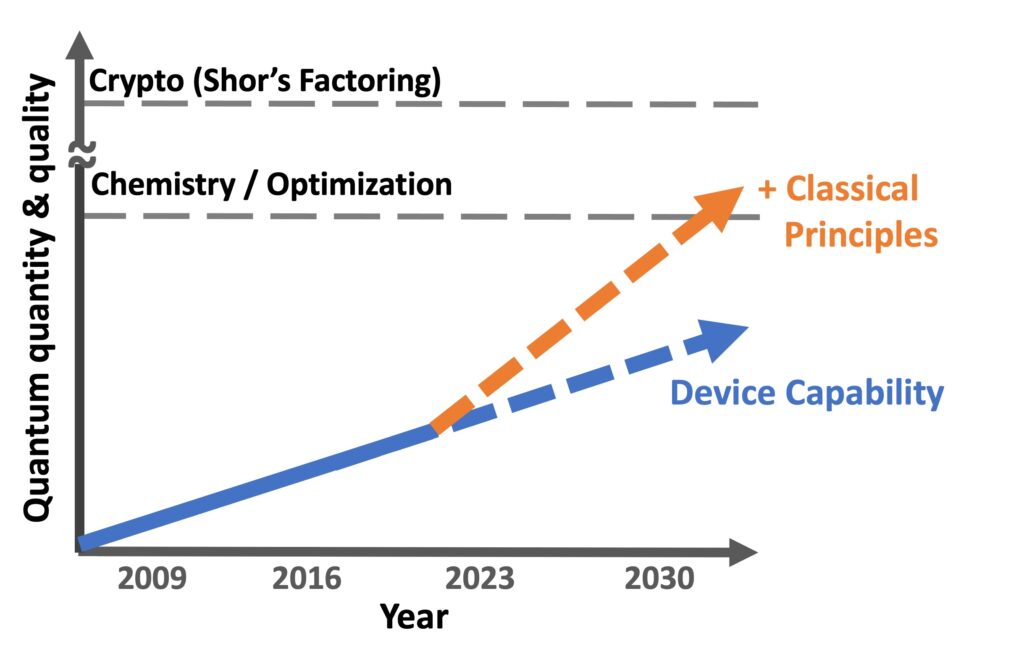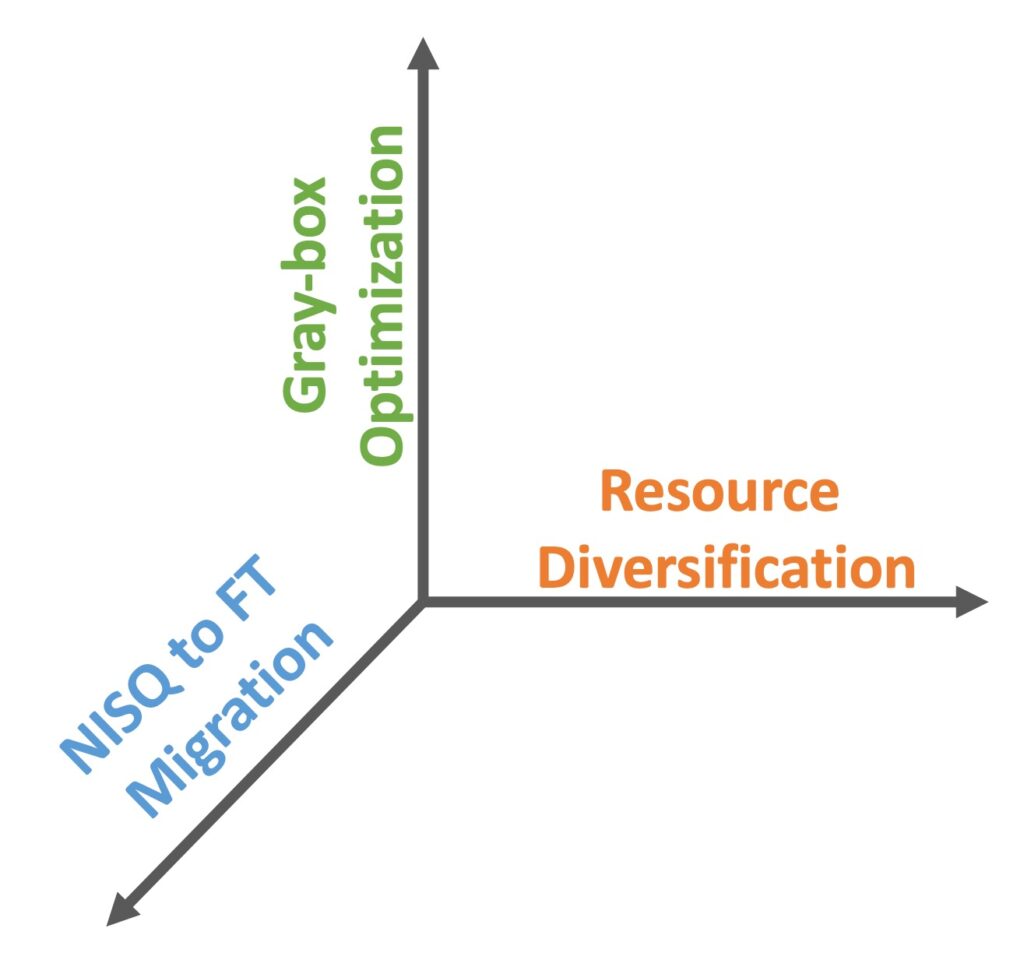Computer Architecture For Quantum Advantage (CAFQA)
Quantum computing is a disruptive technological paradigm with the potential to revolutionize computing and, therefore, the world. It lays a powerful foundation to tackle today’s urgent problems, as well as tomorrow’s emerging challenges. For example, the COVID-19 pandemic highlighted the need to vastly improve our ability to rapidly develop drugs to combat diseases—quantum computing can accelerate this process. Similarly, it can impact other domains of critical interest, such as carbon fixation, forecasting, supply chain, cybersecurity, and machine learning. Over three decades, the promise of quantum computing has grown stronger through theoretical advances in algorithms and experimental advances in device technology. However, today’s quantum systems still face a formidable road ahead to achieve the size and fidelity required to deliver accurate and efficient solutions to classically intractable problems.
Therefore, as quantum devices transform from laboratory curiosity to technical reality, we must unlock the full potential of quantum computing to achieve meaningful benefits on real-world applications with imperfect quantum technology. To do so, it is essential to identify key layers of the quantum hardware-software stack and apply efficient but exhaustive optimizations that remain effective as systems evolve over the continuous spectrum from NISQ (Noisy Intermediate Scale Quantum) to FT (Fault Tolerance). In parallel, we must explore synergistic advancements, both vertically across the stack and horizontally across heterogeneous devices and applications. Overall, it is vital to build a computing ecosystem that actively enhances the capabilities of quantum machines, in a manner well acquainted with application requirements.

Computer architects are critical to this endeavor as they are adept at bridging the information gap between different layers of the computing stack and have progressively accumulated expertise in building tightly constrained highly optimized classical systems—this is invaluable to the future of quantum computing.
The opportunities for classical architects in quantum computing are vast: technology-aware circuit compilation, classical pre/post-processing for quantum executions, latency/bandwidth/power constrained design, scalable classical simulation, multi-chip strategies, cloud resource management, feedback-based optimization, benchmarking and design space exploration, and much more. CAFQA Lab will bring together computer architects trained in quantum and classical computing to leverage classical principles, both in material and philosophy, to build and facilitate a hybrid computing ecosystem for practical quantum advantage.

My (Gokul’s) prior research thrusts have followed this theme and focused on (please see the Publications tab for paper links):
- Classical Application Transformation: Methods to classically ‘prepare’ an application’s quantum circuit(s) prior to execution, to minimize their noisy and expensive quantum footprint,
- Adaptive Noise Mitigation: Classically-inspired deployment of noise mitigation techniques that adapt to the dynamic noise characteristics of devices and the requirements of applications,
- Scalable Error Correction: Designing fault tolerant systems with quantum error correction (QEC) in a scalable manner, alleviating bottlenecks at the quantum-classical technology interface.
- Efficient Resource Management: Classical techniques to map applications to appropriate quantum devices, as well as post-process outputs in a device-aware manner, to boost application fidelity.

The CAFQA Lab long-term vision is to employ these research thrusts toward building a holistic, scalable, and reliable ecosystem for sustained quantum advantage. We will align our research along three axes:
- Gray-box Optimization: Qubit error rates will improve, but errors will not entirely go away, so optimizations to reduce the number of noisy executions as well as the noise in executions, are essential in the near-term and long-term of quantum computing. Therefore, a variety of novel closed-loop (i.e. feedback-based) optimization techniques will be vital to improve practical error mitigation, as well as to transform applications to minimize their footprint on quantum devices. For practical benefits on real-world applications, we will pursue optimization techniques that balance abstraction (for scalability) and integration (for effectiveness).
- Resource Diversification: Heterogeneity is integral to quantum devices. There are multiple viable quantum technologies such as superconducting transmons, trapped-ions and neutral atoms; each of these can be built in unique ways; they come in different sizes and topologies; and noise characteristics can vary considerably over space (i.e., qubits) and time. It is very likely that the quantum future will consist of quantum computing clouds with diverse sets of heterogeneous quantum systems, each tailored to specific usecases, communicating through quantum and classical channels, not unlike the accelerator-rich classical world that we see today. Thus, we will pursue the targeted improvement and coordinated management of diverse quantum resources.
- NISQ-to-FT Migration: To accurately tackle large-scale quantum tasks, we need fault tolerant quantum systems. But the road to FT is paved with obstacles—the cost of quantum and classical resources to achieve practically useful FT can be near insurmountable. To reduce classical resource costs, we need to alleviate latency and bandwidth bottlenecks in decoding for QEC. To reduce quantum resource costs, we need better physical qubits, so that each logical qubit can be encoded in fewer physical qubits. And for better physical qubits, we need error mitigation suited to QEC-enabled FT systems. With this in mind, we will pursue the seamless migration from today’s NISQ devices to tomorrow’s FT systems.

 MENU
MENU 